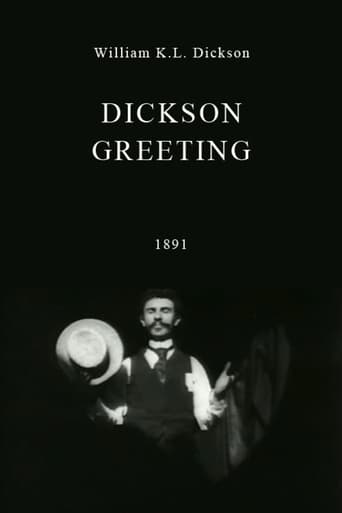

While the modern world may not think much of this short film featuring William K. L. Dickson moving his hat from one hand to the other, it has a big spot in cinematic history. For one thing, the famous man Thomas Edison used his Kinetograph to film it. Also, later in the 1900s films were being made in which the plot involved the camera itself, and the person filming with it. (A good example of this can be found in James Williamson's "The Big Swallow" and Cecil Hepworth's "How it feels to be Run Over.") I believe this film was the first to have that idea that the camera and the cameraman could be part of the action.In this case, Mr. Dickson does a gesture with his hat for the camera. While he doesn't seem to notice the camera, that idea is still there: when it was presented to audiences, they would feel as though they were being greeted. Thus, instead of watching the action, they would also be part of it.8/10 rating: 7 stars for how much I liked it, 1 for its cinematic value.
... View MoreThis one shows us the one of the most important figures in early American cinematography. William K.L. Dickson greets the audience that has come to take a look at that wonderful magical new thing called film. I personally find this one less interesting than his Newark athlete from the same year, maybe also because it's considerably shorter and less spectacular. Basically he's just pulling a hat.It's another fine example, however, how much he has improved his craft since working on his maiden project Monkeyshines. The people who he's recording are now clearly visible and not just anonymous ghostlike contours.
... View MoreThis is of course not the first film in history and presumably the Edison Manufacturing Company did dozens of test before actually shooting this and of course also shot "Monkeyshines, No. 1", 2 and 3 prior to this but it is the first film that was shown to a wide audience and press, at The National Federation of Women's Clubs, through a motion picture exhibition device the Kinetoscope, an invention of mostly William K.L. Dickson that let a strip of several images passing front of an illuminated lens behind a spinning wheel. Therefor this 3 second short plays an important part in movie history, as being the very first to be shown to an audience.The motions are perfect, though because of the shooting speed it all seems to occur in slow motion. There are no jerky movements and also the images is surprisingly clear. The film was shot with a Kinetograph, another William K.L. Dickson invention. He therefor is also credited as the inventor of the motion picture camera. The color white is shiny and the less dark colors of Dickson's clothing distinct itself well from the pitch black background used to film this. You can clearly see Dickson's face and also the more detailed look of his hair.Still I feel they could had done a bit more with the movement in this film. Show the audience some more of the possibilities of moving images. Instead now basically all Dickson does, is bring his hat from his one hand to the other, as a sort of wave toward the audience and he moves his head slightly, supposedly as a small nod toward the audience but that isn't all too clear to see.In a way this movie is a great metaphor for William K.L. Dickson and Thomas A. Edison literal greeting and welcoming us to the world of film. It perhaps provides the movie with just as much impact and significance, as it did 116 years ago.8/10http://bobafett1138.blogspot.com/
... View MoreAs simple and brief as it is, this mini-feature is one of the most important steps in the development of moving pictures. In its time, it was an enormous step forward from previous experiments (at least from those of which records still exist), and it shows a complete success in getting past some of the difficulties with the Edison Company's earlier "Monkeyshines" experiments.The footage simply shows Edison's associate W.K.L. Dickson, performing a jaunty motion of greeting, which is then repeated more than once. The image is very clear, with only a slight suggestion of minor distortion around the edges. The illusion of motion is smooth and completely convincing. It has also survived in good condition, which is fortunate given its significance.It is also appropriate that such a significant step forward would preserve the image of Dickson, who was so instrumental in developing the new technology. While the exact amount of credit rightfully due to Edison, Dickson, and other individuals can now no longer be determined accurately, it seems apparent from all accounts that Dickson probably deserves as much credit as anyone in the early development of motion pictures.
... View More